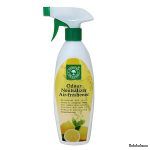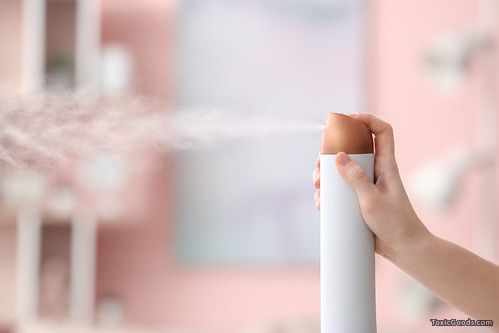Air Fresheners – Toxicity Chemicals in Every Spray
 That quick spritz of air freshener might make your home smell like a spring meadow, but it’s likely filling your air with a cocktail of chemicals linked to serious health problems. From plug-in diffusers to aerosol sprays, most commercial air fresheners contain volatile organic compounds (VOCs) that don’t just mask odors—they can affect your lungs, hormones, and even brain function.
That quick spritz of air freshener might make your home smell like a spring meadow, but it’s likely filling your air with a cocktail of chemicals linked to serious health problems. From plug-in diffusers to aerosol sprays, most commercial air fresheners contain volatile organic compounds (VOCs) that don’t just mask odors—they can affect your lungs, hormones, and even brain function.
The irony is hard to ignore: products marketed to create a “fresh” environment often introduce more indoor air pollution than they eliminate. Phthalates, formaldehyde, and synthetic musks linger in the air long after the initial scent fades, exposing everyone in your household to potential harm. Children, pets, and those with respiratory conditions are especially vulnerable to these invisible toxins.
Most air fresheners contain a troubling mix of ingredients:
- Phthalates: Used to make fragrances last longer, these hormone disruptors are linked to developmental issues
- Formaldehyde: A known carcinogen that forms when certain VOCs break down
- 1,4-Dichlorobenzene: Found in many toilet bowl blocks and mothballs, damaging to lungs
- Synthetic musks: Accumulate in body fat and breast milk
These chemicals don’t just float harmlessly in the air. When inhaled, they enter the bloodstream through the lungs, bypassing the body’s normal detox pathways. Many are fat-soluble, meaning they accumulate in tissues over time rather than being flushed out.
 The Body’s Reaction to Fake Scents
The Body’s Reaction to Fake Scents
Immediate effects often include:
- Headaches and dizziness
- Eye, nose, and throat irritation
- Asthma attacks in sensitive individuals
Long-term exposure has been associated with:
- Reduced lung function
- Hormonal imbalances
- Neurological symptoms like brain fog
- Increased cancer risk
Pets suffer even more acutely—their sensitive noses and smaller bodies make them particularly vulnerable. Birds can die from the fumes, while dogs and cats may develop respiratory diseases or liver problems from chronic exposure.
How Air Fresheners Poison Our Pets
Our furry companions pay the highest price for our desire for artificial freshness. Dogs, cats, birds, and small mammals process these chemicals completely differently than humans—and far more dangerously. A cat’s liver, for example, lacks the enzymes to break down common air freshener compounds, causing toxins to accumulate to lethal levels over time.
The Devastating Impact on Animal Health
For Cats:
- Essential oil diffusers can cause fatal respiratory distress (even from passive exposure)
- Plug-in fresheners lead to chronic kidney disease from phenol accumulation
- Aerosols trigger asthma attacks resembling choking fits
For Dogs:
- Phthalates disrupt endocrine function, leading to thyroid disorders
- Formaldehyde from sprays causes nosebleeds and oral tumors in scent-hound breeds
- Benzene derivatives correlate with rising canine lymphoma cases
For Birds:
- Teflon-coated air freshener heaters release fumes that can kill parrots within minutes
- Synthetic musks cause neurological damage visible as feather-plucking behaviors
Veterinarians report a 300% increase in “air freshener syndrome” cases over the past decade, with symptoms including:
- Violent seizures after licking sprayed surfaces
- Liver failure in young animals
- Mysterious skin lesions matching chemical burn patterns
Why Pets Can’t Escape the Danger
Animals face triple exposure risks:
- Inhalation (dogs have 300 million scent receptors vs. our 6 million)
- Skin absorption (through paw pads and fur oils)
- Oral ingestion (from grooming chemically-coated fur)
A 2023 University of California study found that homes using air fresheners had pets with:
- 47% higher organochlorines in blood work
- 62% more veterinary visits for respiratory issues
- 80% increased cancer rates in cats over age 7
Natural Alternatives That Actually Work
Breaking the air freshener habit is easier than you think:
- Open windows regularly for real fresh air
- Use baking soda to absorb odors (great for carpets and refrigerators)
- Simmer citrus peels with spices instead of synthetic sprays
- Try essential oil diffusers (sparingly, as some oils can irritate pets)
- Maintain proper humidity to prevent musty smells
Chemical Properties and Health Effects
| Chemical | Common Products | Health Risks | Persistence |
|---|---|---|---|
| Phthalates | Plug-in fresheners | Hormone disruption, infertility | Months |
| Formaldehyde | Aerosol sprays | Cancer, respiratory damage | Weeks |
| Synthetic Musks | Fabric refreshers | Bioaccumulation, organ toxicity | Years |
| Limonene | Citrus-scented sprays | Forms formaldehyde when oxidized | Days |
References and Sources
- Environmental Working Group – Air Fresheners
Detailed analysis of air freshener ingredients and health impacts
URL: https://www.ewg.org/ - NIH – Household Air Pollution Study
Research on VOC emissions from air fresheners
URL: https://www.ncbi.nlm.nih.gov/pmc/articles/PMC3018511/ - EPA – Indoor Air Quality Guidelines
Government recommendations for reducing indoor pollutants
URL: https://www.epa.gov/indoor-air-quality-iaq
